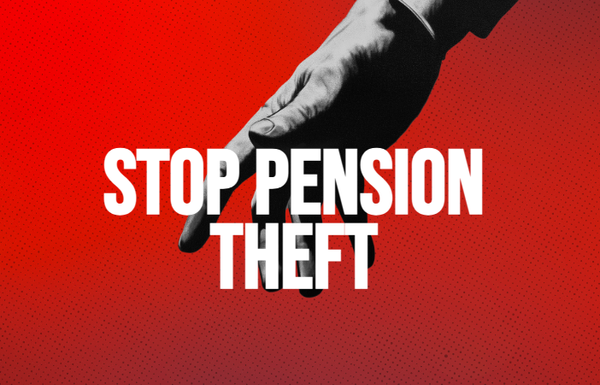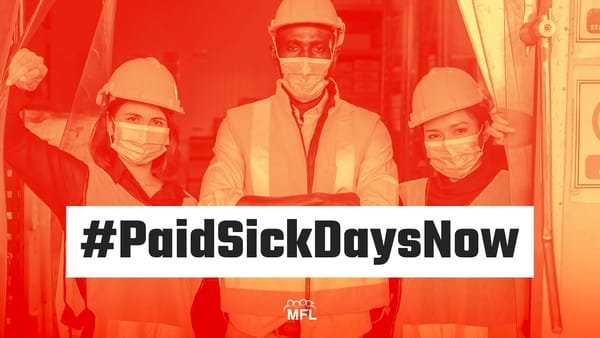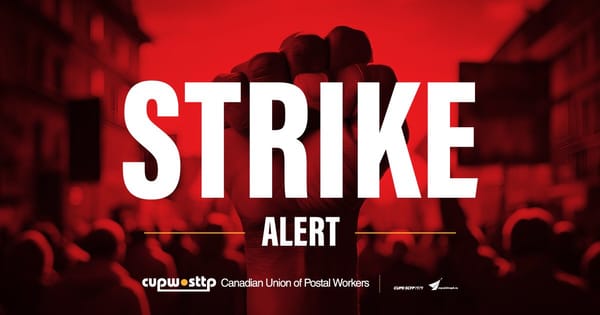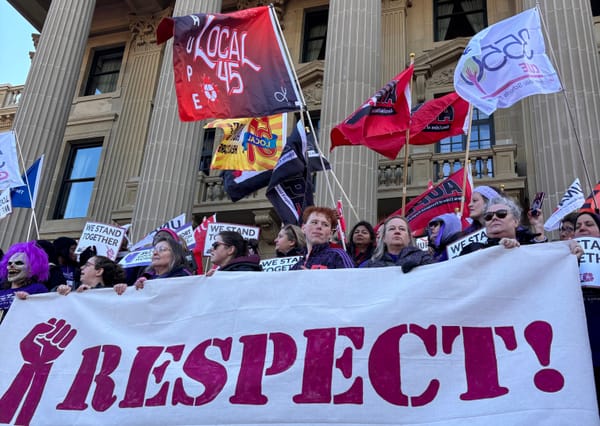
“Labour standards are health standards, and precarious work has undermined pandemic preparedness, response, and recovery.” – Decent Work and Health Network
Good jobs are public health policy. If this wasn’t clear before the pandemic, it certainly is now. Yet here we are, in a sixth wave of the pandemic, and most governments across Canada have done virtually nothing to address the precarious jobs, low wages, and lack of paid sick leave that fueled previous waves.
The Decent Work and Health Network (DWHN), a group of health workers and trainees who advocate for better employment conditions, have published a new report that details how vital it is for us to address precarious work as a matter of public health. As the report, titled “Prescription for a Healthy Pandemic Recovery: Decent Work for All,” makes clear, healthy workplace policies are the basis for a healthy society for all.
Some of what the DWHN proposes includes: a $20 minimum wage; more full-time work; 10 paid sick days, and 14 during a public health emergency; status for migrant workers; ending employee misclassification; and greater access to unionization.
Two years and multiple waves of the pandemic has led to more than 3.4 million people across Canada becoming infected, and more than 37,000 being killed. These are only the confirmed cases. Since governments essentially stopped testing and tracing, we’ve been left without accurate data on the true extent of spread.
DWHN has been sounding the alarm about workplace contagion and the public health threat of precarious employment throughout the pandemic. After the first wave, the organization issued a report called “Before it’s Too Late: How to Close the Paid Sick Days Gap during COVID-19 and Beyond.” As the report made clear, by refusing to legislate paid sick days, governments were forcing low-wage workers into an impossible choice: work sick or lose essential income.
The DWHN’s newest study follows up with a broader set of recommendations for how to reform our employment system to prevent future health emergencies from compounding into the social crises that marked COVID-19.
As Danyaal Raza, a family physician with St. Michael’s Hospital, explained to me, “The links between precarious employment and health risks were there before the pandemic, and like so many other issues, COVID-19 further underlined them.” As he summarized, “Employment was a predictor of risk for COVID, but also of how well you do afterward. It doesn’t necessarily have to do with the work itself, but with the way laws and legislation structure how people work.”
The new report traces many of these issues of economic inequality back to the H1N1 outbreak in 2009, and shows how governments knowingly let socioeconomic drivers of contagion continue. Problems identified by public health experts over a decade ago — such as the growth of low-waged precarious employment, lack of paid sick days and insecure citizenship status — went unaddressed and exacerbated COVID-19 across Canada.
Roughly a third of workers can’t perform their jobs from home, particularly in essential workplaces such as health care, food processing and manufacturing. Workers in these essential jobs, the report indicates, are also less likely than their counterparts who were able to work from home to have access to paid sick days and other benefits that would have kept them safer during the pandemic.
Moreover, women and racialized workers are disproportionately represented among those performing essential work. Consequently, low-income and racialized communities had much higher rates of COVID-19 infections, hospitalizations, and deaths. Throughout each wave of the pandemic, workplaces without paid sick days were key drivers of the pandemic.
As the report makes clear, we need a proper diagnosis of the problems in order to find solutions. Examining the “social determinants of health,” such as working conditions, points us in the direction of evidence-based policies.
Drawing from best practice jurisdictions across North America and Europe, the DWHN’s report identifies three pillars of decent work: adequate wages and secure hours, accessible paid sick days, and properly enforced workplace protections. It concludes that “these recommendations provide a prescription for a healthy pandemic recovery through decent work for all.”
Income is a key determinant of physical and mental health. Conversely, low wages and income inequality can have significant negative impacts on health. Additionally, better wages tend to be a reflection of overall better employment conditions — full-time hours, job stability, and protections such as unionization and benefits.
The Ontario government’s decision in 2018 to freeze the minimum wage and reverse equal pay for equal work legislation aimed at protecting temporary agency and contract workers likely worsened the pandemic. Temporary pandemic pay for eligible employees in select industries was no substitute.
As the DWHN reports, part-time, contract and temporary workers frequently earn less for the same work as full-time, permanent, and directly hired workers. Temporary workers can earn up to 40 per cent less than permanent employees. Moreover, part-time employees are paid far lower hourly rates than full-timers. These wage gaps widen further when it comes to racialized and women workers.
Wage inequality showed up as a predictor of COVID-19 infection. Temporary agency workers contracted the virus at higher rates than full-time, permanent workers and the general population.
In general, low-wages made it far less likely that people could self-isolate and therefore much more likely that they’d go to work sick.
A lack of full-time hours frequently meant workers piecing together several jobs to make ends meet, and in the context of a public health emergency, spreading the virus between work sites. As Raza explained, “People working non-union [personal support worker] jobs in long-term care, for example, were often piecing together multiple jobs to get full-time hours, which contributed to the devastating death rate that we saw in long-term care homes.” Additionally, insecure hours mitigated against workers taking time off when sick or potentially exposed to COVID.
In response to these issues, the report calls for a $20 per hour minimum wage and bringing back equal pay for equal work provisions, as well as promoting more full-time, secure forms of employment.
As in its previous work, the DWHN continues to advocate for universal and accessible paid sick days. Gaps in paid sick days not only undermined efforts to contain the virus but also the vaccination rollout. The report is full of evidence demonstrating the cost-effectiveness and importance of short-term paid sick leave in guarding against what it calls “infectious presenteeism,” i.e. going to work sick.
The organization’s call for 10 permanent, employer-paid sick days, along with an additional 14 during public health emergencies, is in line with other developed countries and would be an essential reform. Despite evidence showing how little paid sick days cost in practice — when health care savings and productivity gains are factored in — employers and governments continue to resist implementing them.
Finally, the report makes an important set of recommendations concerning workplace protections. When I spoke with Raza, he emphasized that adequate and enforced protections are the often overlooked portion of sound public health policy. Workers must be able to speak up and exercise their rights free from reprisal.
“Prescription for a Healthy Pandemic Recovery” therefore calls for full immigration status for all, protections against unjust dismissal, an end to employee misclassification and more unionization. Taken together, these four changes would both allow a greater number of workers to improve their rights at work but also strengthen the ability of workers to assert those rights.
The DWHN’s recommendations are a matter of solidarity. The report’s policy proposals would not only benefit essential workers but also the public with whom they engage. Secure employment is a public health necessity.
As the report summarizes, “COVID-19 revealed that workers whose labour is considered essential are treated as though their lives are expendable.” It’s time to change this.








Member discussion